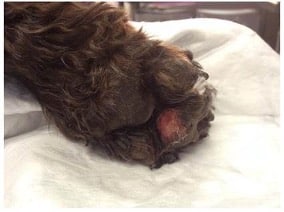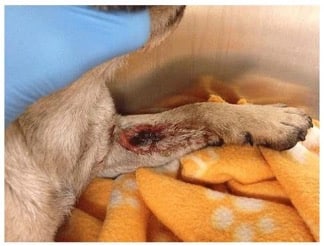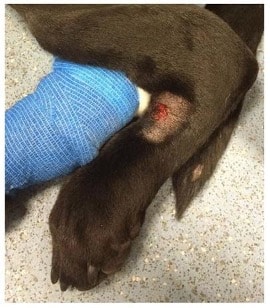About CRGV

Alabama rot, also known as CRGV (cutaneous and renal glomerular vasculopathy) is a very rare, potentially life-threatening disease in dogs, causing damage to the blood vessels in the skin and sometimes the kidney. Tiny blood clots form in the blood vessels which blocks them, and in the skin it causes ulceration, but in the kidney, it can lead to severe organ dysfunction (kidney failure).
Some dogs develop skin sores only, whilst others develop skin sores and kidney failure. Recovery is expected in the former group; however, sadly many dogs that develop kidney failure do not survive because of this disease.


It is not yet known what causes the disease or why some dogs suffer more than others so diagnosing and treating it can be very difficult. There is active research ongoing to try and understand more. We do know that the disease is more common in the winter and spring and in dogs who walk in muddy, woodland areas.
CRGV can affect any dog, whatever age or breed. The breeds most affected have been Labradors, spaniels and Hungarian vizslas.
Important note: Although CRGV can be very serious, the number of dogs affected with skin lesions and kidney failure is relatively low when we compare it to other diseases that we see in dogs (277 confirmed cases across the UK between November 2012 and July 2021).

